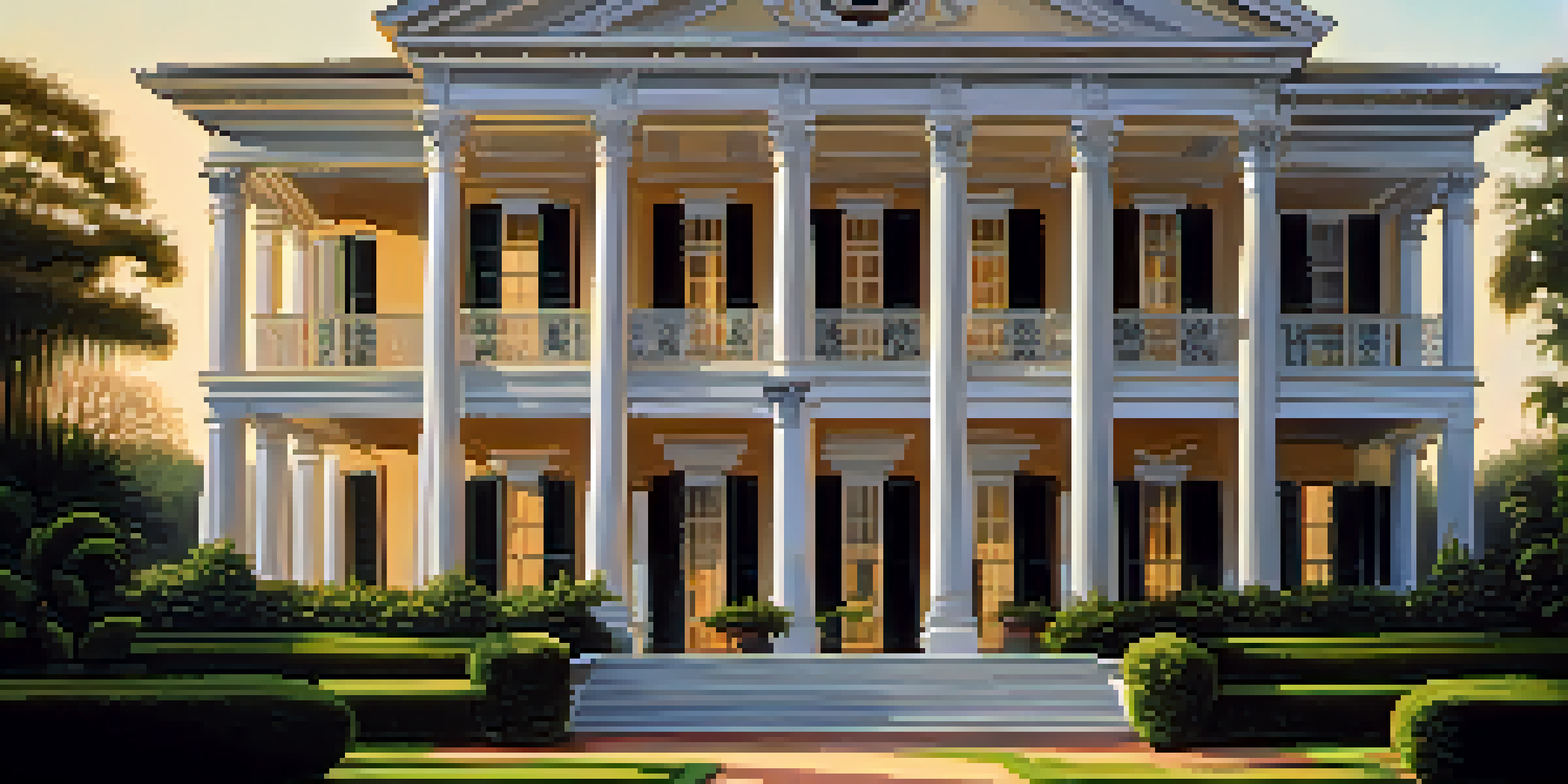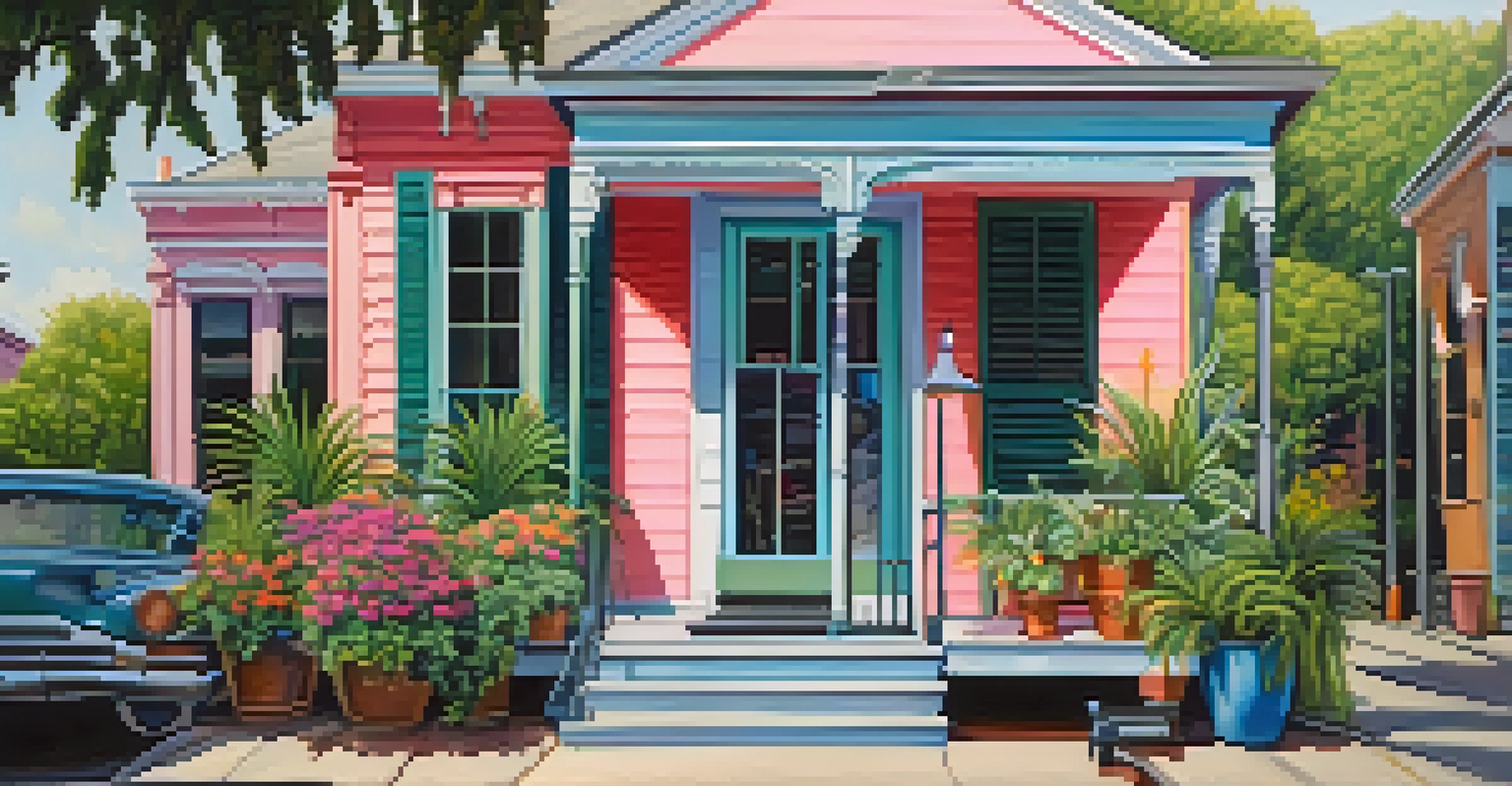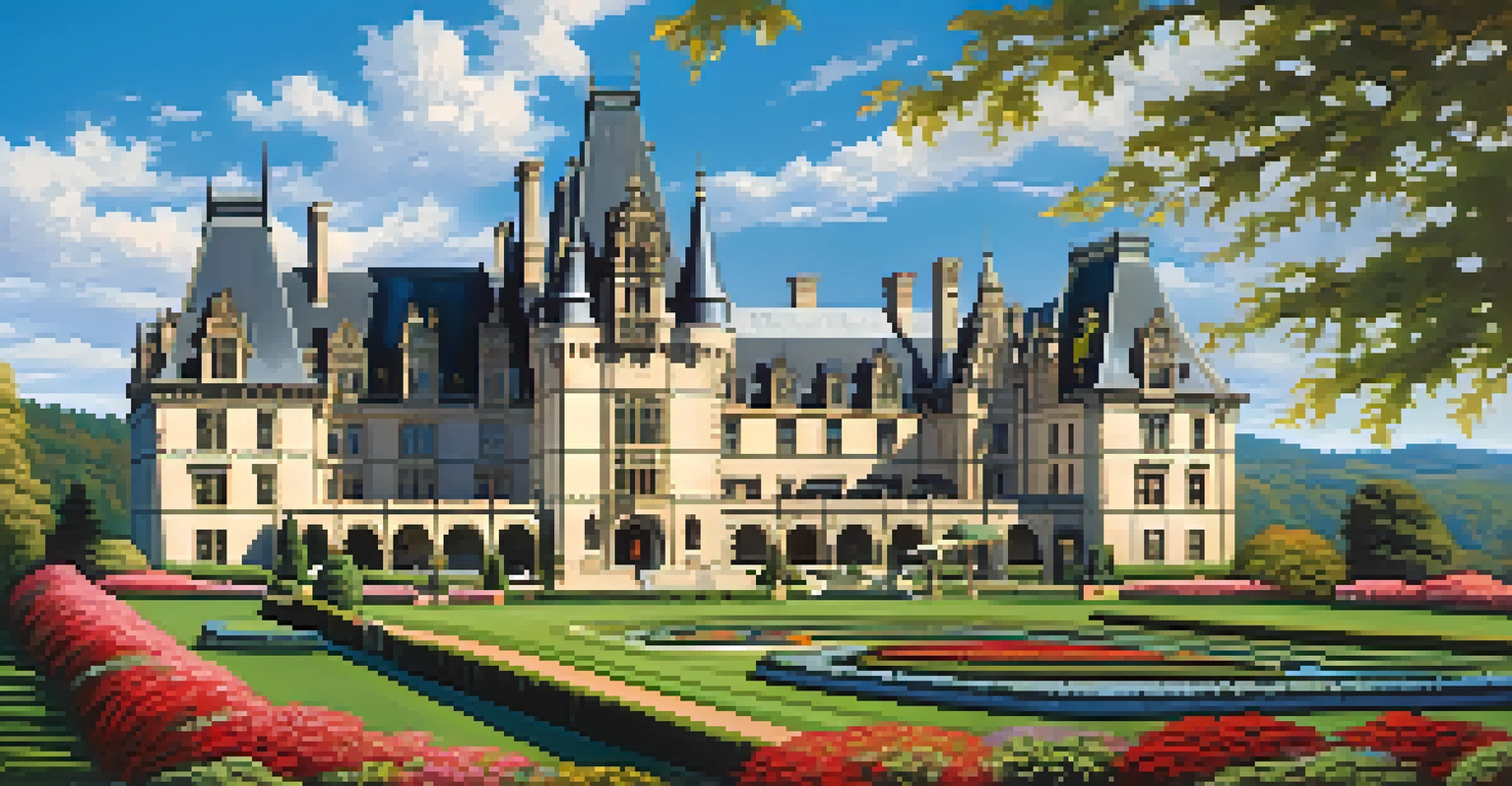Architectural Wonders of Southern Cultural Heritage

The Rich Tapestry of Southern Architecture
Southern architecture is a vibrant blend of styles, reflecting the region's diverse cultural influences. From colonial structures to modern designs, each building tells a story of its time. These architectural marvels not only showcase aesthetic beauty but also embody the history and traditions of the South.
Architecture is the learned game, correct and magnificent, of forms assembled in the light.
Take, for instance, the iconic antebellum mansions of Louisiana, which reveal the opulence of the plantation era. Their grand columns and intricate wrought-iron balconies stand as a testament to both wealth and the complex history of the region. Each mansion has its own narrative, often marked by both triumph and tragedy.
Similarly, the charming shotgun houses of New Orleans exemplify the unique adaptability of Southern architecture. These narrow homes, designed for efficient use of space, reflect the cultural melting pot that characterizes the city. They serve as a reminder of how architecture can evolve while still honoring its roots.
Historical Influences Shaping Southern Architecture
The architecture of the South is deeply influenced by its history, particularly the colonial and antebellum periods. Spanish, French, and British settlers left indelible marks on the landscape, creating a unique architectural language. These influences can be seen in everything from the layout of towns to the design of individual buildings.

For example, the Spanish missions in Florida showcase a distinct style that merges functionality with artistic flair, featuring stucco walls and red-tiled roofs. This blend of cultures not only shaped the aesthetics but also created a sense of community and identity among the inhabitants.
Diverse Influences Shape Southern Design
Southern architecture is a rich blend of styles influenced by its colonial past and the diverse cultures that have shaped the region.
Moreover, the impact of the Civil War on architecture cannot be overlooked. Many grand structures were destroyed, leading to a rebuilding phase that incorporated new ideas and styles, helping to redefine Southern architecture for future generations.
Iconic Southern Landmarks and Their Stories
No discussion of Southern architectural wonders would be complete without mentioning landmarks like the Parthenon in Nashville or the Biltmore Estate in Asheville. The Parthenon, a full-scale replica of the original in Greece, serves as a symbol of Nashville's commitment to culture and the arts. Its majestic columns and sprawling gardens are a must-see for visitors.
We shape our buildings; thereafter, they shape us.
On the other hand, the Biltmore Estate is a stunning example of Gilded Age opulence, boasting 250 rooms filled with treasures from around the world. This architectural giant offers insight into the life of the Vanderbilts and their influence on American society. Walking through its halls, one can almost hear the echoes of history.
These landmarks not only attract tourists but also foster a sense of pride among locals. They serve as reminders of the South's rich heritage and the stories that have shaped it over the years.
The Role of Nature in Southern Architecture
Nature plays a crucial role in shaping the architectural landscape of the South. The region's climate and geography have influenced building materials and design choices for centuries. From the use of local timber to the incorporation of expansive porches, Southern homes are designed to harmonize with their surroundings.
For instance, the elevated homes in the Lowcountry are built to withstand flooding and provide cooling breezes, showcasing a practical response to the environment. This thoughtful integration of nature and architecture creates spaces that are not only beautiful but also functional.
Preservation Efforts are Vital
Maintaining the South's architectural heritage is crucial for future generations, with many organizations working to restore and adapt historic sites.
Additionally, gardens and outdoor spaces are integral to Southern homes, inviting residents to connect with nature. The lush greenery and vibrant flowers enhance the architectural beauty, making outdoor living an essential aspect of Southern culture.
Preservation Efforts: Keeping History Alive
As the South continues to grow and change, preserving its architectural heritage becomes increasingly important. Many organizations and local communities are dedicated to protecting these historical sites, ensuring future generations can appreciate their significance. Preservation efforts often involve restoring buildings to their original state, while also adapting them for modern use.
For example, the restoration of historic districts in cities like Charleston has revitalized neighborhoods while maintaining their historical charm. These efforts not only protect the architecture but also promote tourism and local economies, creating a win-win situation for communities.
Moreover, educational programs aimed at teaching locals about their architectural heritage play a vital role in preservation. Engaging the community fosters a sense of ownership and pride, encouraging individuals to advocate for and participate in preservation initiatives.
Modern Architecture: A New Chapter in Southern Design
Contemporary architecture in the South often pays homage to its historical roots while embracing innovative design. Modern architects are increasingly blending traditional elements with cutting-edge techniques, resulting in unique structures that reflect both past and present. This fusion creates a dynamic architectural landscape that continues to evolve.
One striking example is the use of sustainable materials and practices in new constructions. Many modern buildings incorporate green technologies, reducing their environmental footprint while still honoring the region's heritage. This shift towards sustainability is a testament to the South's adaptability and forward-thinking approach to architecture.
Modern Design Honors Tradition
Contemporary Southern architecture increasingly incorporates traditional elements while embracing sustainable practices and local cultural motifs.
The incorporation of local art and cultural motifs also plays a significant role in modern Southern architecture. By weaving local narratives into their designs, architects create spaces that resonate with the community, fostering a deeper connection between the people and their built environment.
Cultural Events Celebrating Southern Architecture
Throughout the year, various cultural events and festivals celebrate Southern architecture, offering a chance for locals and visitors to engage with this rich heritage. Events like Historic Preservation Month and local architecture tours highlight the beauty and significance of architectural gems across the region. These gatherings not only educate but also inspire appreciation for architectural history.
For example, the Savannah Tour of Homes & Gardens invites participants to explore beautifully restored homes while learning about their architectural styles and historical significance. This immersive experience fosters a deeper understanding of the region's architectural diversity and encourages preservation efforts.

Additionally, workshops and lectures hosted by architectural historians provide valuable insights into the evolution of Southern architecture. These events create a platform for dialogue, allowing communities to come together and celebrate their shared heritage.